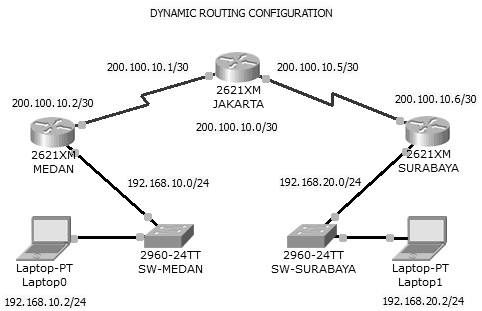
 Data Structure
Data Structure Networking
Networking RDBMS
RDBMS Operating System
Operating System Java
Java MS Excel
MS Excel iOS
iOS HTML
HTML CSS
CSS Android
Android Python
Python C Programming
C Programming C++
C++ C#
C# MongoDB
MongoDB MySQL
MySQL Javascript
Javascript PHP
PHP
- Selected Reading
- UPSC IAS Exams Notes
- Developer's Best Practices
- Questions and Answers
- Effective Resume Writing
- HR Interview Questions
- Computer Glossary
- Who is Who
What are Dynamic routing algorithms in computer networks?
Dynamic routing is an adaptive routing algorithm, and it is a process where a router can forward data through a different route.
The term is most associated with data networking to describe the capability of a network to 'route around' damage, such as loss of a node or a connection between nodes, so if other path choices are available. Dynamic routing allows many routes to remain valid in response to the change.
Systems that do not implement dynamic routing are usually preferred to static routing, because static routes through a network are described by fixed paths. If anything, those that take an affected path will either have to wait for the failure to be repaired before restarting its journey or will have to fail to reach its destination and give up the journey.
Uses
The benefits of using a dynamic routing protocol are as follows −
The routers can exchange routing information whenever there is a topology change.
This exchange allows routers to automatically learn about new networks and to find alternate paths if there is a link failure to a current network.
Advantages
The advantages of dynamic routing algorithm are as follows −
Dynamic routing is simpler to configure on larger networks.
If a link goes down this technique can choose a better router dynamically.
It has the ability to load balance between multiple links.
Disadvantages
The disadvantages of dynamic routing algorithm are as follows −
Dynamic routing consumes more bandwidth because updates are shared between routers.
In dynamic routing, the routing protocols keep an additional load on the router.
Working condition
The working condition of dynamic routing is explained below in a stepwise manner −
Step 1 − In dynamic routing a routing protocol must be installed on every router in the internetwork.
Step 2 − Starting manually to enter the first hop of the routing table of one router with routing information, and then the routing protocol takes over and dynamically builds the routing table for each router.
Step 3 − Routers exchange their routing information so that if the internetwork is reconfigured or it goes down, the routing tables of each router are modified accordingly.
Step 4 − Hosts on a network need only be configured so that their default gateway address matches the IP address of the local router interface.
Step 5 − Dynamic routers are simpler to administer than static routers, but they are sometimes less secure.
Step 6 − If the network is reconfigured or a router goes down, it takes time for this information to propagate between the various routers on the network.
The diagram given below depicts the dynamic routing algorithm −


